A significant part of the Netherlands lies on land below sea level. However, two recent studies showed that sea levels might rise significantly due to climate change.
Can The Netherlands survive a sea level rise of > 2 meters?
This raises the question of how much of a rise in sea level the Netherlands can handle.
The Netherlands can survive a sea level rise of up to 2 meters. However, a rise in sea level of more than 2 meters requires draconian measures to prevent flooding in The Netherlands.
The Intergovernmental Panel on Climate Change (IPCC) report concluded that global warming caused by human activity occurred much faster than expected.
In October 2021, the Royal Netherlands Meteorological Institute (KNMI) published a report (Klimaatsignaal’21) on the effects of global warming on the climate in the Netherlands and the sea level off the Dutch coast.
Let’s look at these scientific reports to understand how much The Netherlands should be concerned about the rising sea levels.
Sea Level Rise And The Netherlands
How Much Of The Netherlands Is Below Sea Level?
I have discussed in another article how much of the Netherlands is already below sea level.
You must realize that the sea level off the Dutch coast varies by about 1.5 meters between low and high tide. Therefore, experts use an average sea level between low and high tide to determine how much of the Netherlands is below sea level.
This average sea level is called 0 meter Normaal Amsterdams Peil (NAP).
26% of the Netherlands is below average sea level. Since the sea level varies by ± 1.5 meters between low and high tides, and even more during spring tides, 59% of the Netherlands is vulnerable to flooding by the sea.
When answering the question of how much of a rise in sea level the Netherlands can cope with, our engineers take extreme conditions such as storms and storm surges into account. For example, a storm surge caused devastating floodings in Zeeland in 1953.
In extreme circumstances, 59% of the Netherlands is already at risk from floods. Over half of the Dutch population lives in areas already at risk of flooding under extreme conditions.
God created the earth,
But the Dutch created The Netherlands
A key point to understanding the current situation is how much water needs to be drained annually to prevent flooding in 26% of the Netherlands below sea level.
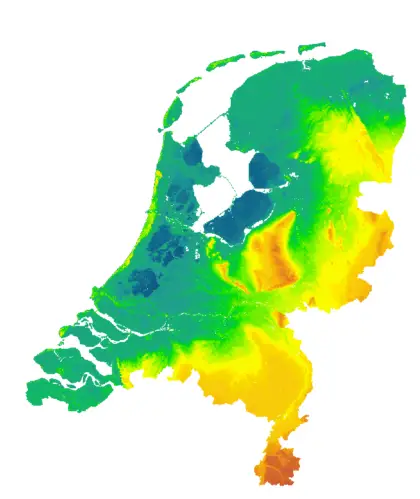
About 19 trillion liters (5 trillion gallons) of water annually are pumped out of low-lying areas in The Netherlands and discharged to the sea via the rivers.
Nineteen trillion liters of water per year may not sound like much, but it is 19,000,000,000 liters annually. That is an enormous amount of water.
If that continuous pumping were to stop, the dark blue areas on this map of the Netherlands would be lakes again within months.
The Dutch can be grateful that they have such a well-functioning water board system that pays close attention to water levels in The Netherlands. Unfortunately, however, more water must be pumped away with a further rising sea level. Currently, it is unclear if this will be technically possible.
Fortunately, the water no longer has to be drained by windmills, but there is an advanced interconnected system of pumps and pumping stations.
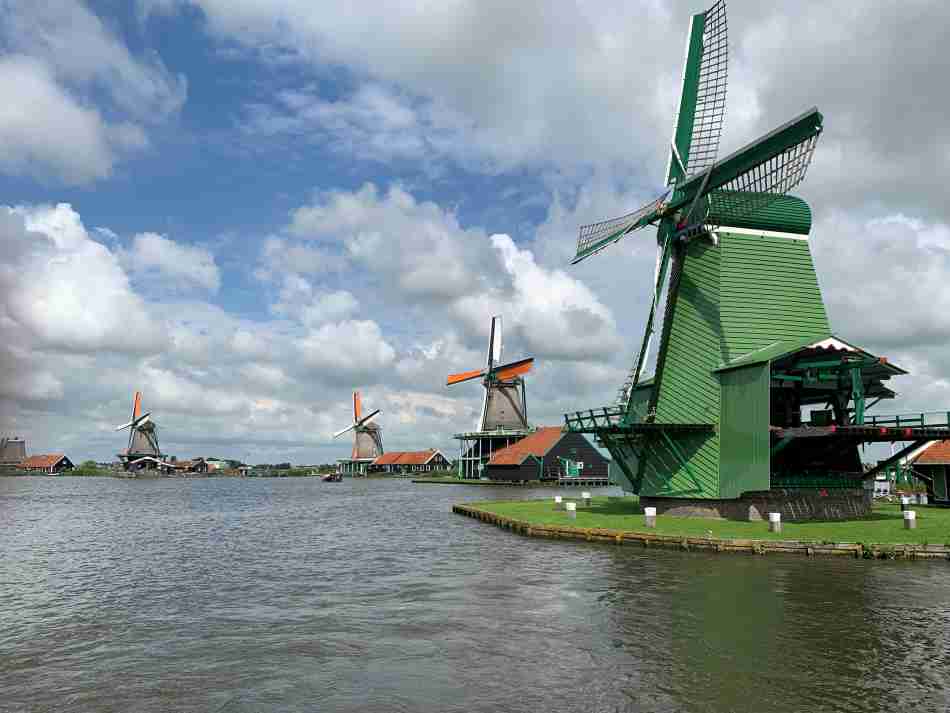
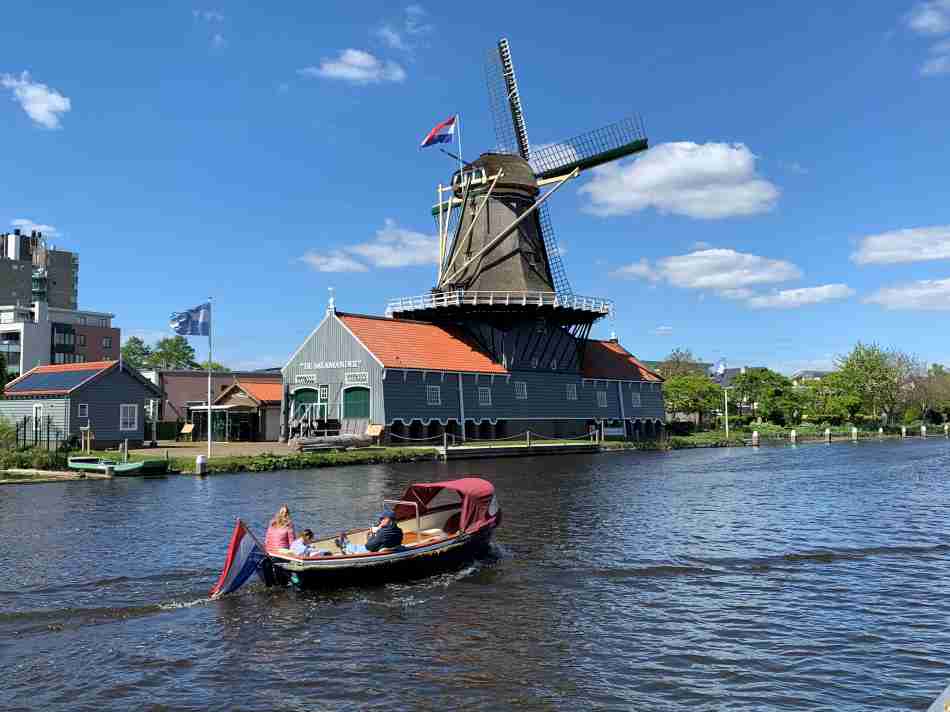
How Much Is The Sea Level Rising At Present?
The next point to discuss is how much the sea level rises annually.
The global sea level rose in 2021 by an average of 3-4 millimeters/year and ± 3 millimeters per year for the Dutch coast. The total rise in global sea level between 1901 and 2018 was ± 20 cm.
Sea levels are not the same everywhere in the world. Water in the oceans is not distributed equally over the globe.
Sea levels are not the same worldwide and vary due to gravity, ocean currents, wind, and the earth’s rotation. Also, the gravity of the ice sheets in Greenland and Antarctica, the self-gravity effect, causes the sea level in those regions to be much higher than the average sea level.
Therefore, the importance of melting the Greenland and Antarctic ice sheets goes above and beyond the extra water that enters the oceans from the melted ice. In addition, the gravity of these ice sheets (self-gravity) also affects the global sea level distribution.
Fortunately, the Netherlands lies relatively close to Greenland, which means that the Netherlands partly benefits from the melting of the Greenland ice sheet. This is because the sea level around Greenland will decrease when there is no more gravity from this ice sheet (less self-gravity).
However, the Netherlands lies much further from Antarctica. Therefore, the Netherlands will suffer much more from melting the Antarctic ice cap. Furthermore, Antarctica’s ice cap is much larger than Greenland’s.
What is most concerning is the publication of Dutch scientists in 2022 in which they demonstrated that the sea level rise in the North Sea for the Dutch coast has accelerated from 1,7 ± 0,3 mm/yr to 2.7 ± 0.4 mm/yr in recent years.
That is an unprecedented acceleration of the sea level rise and concerning because it is still unclear if the acceleration in sea-level rise may increase even further.
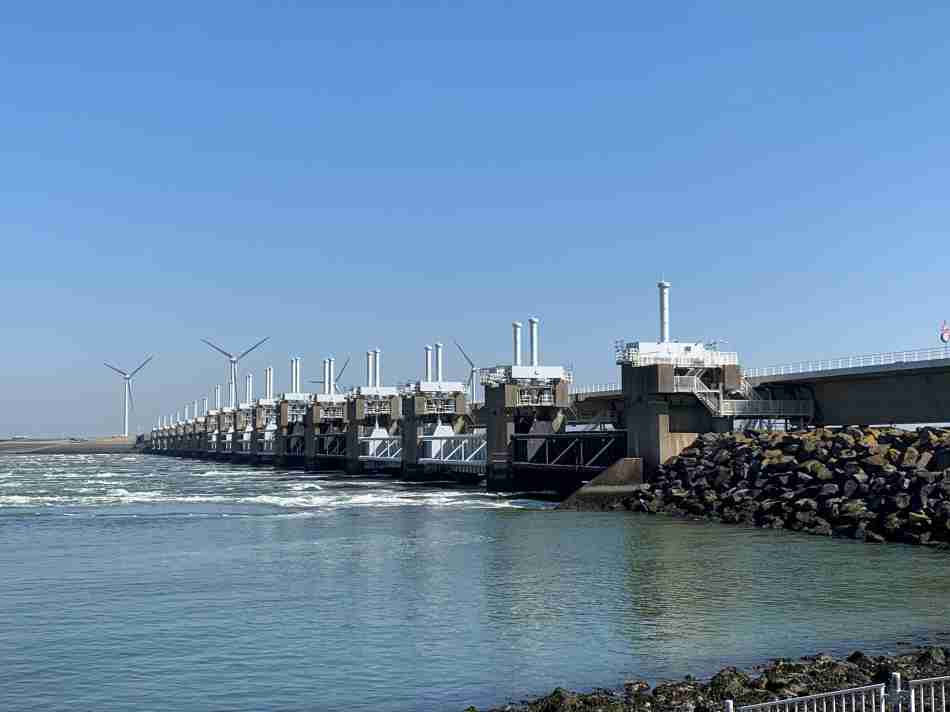
Why Are Sea Levels Rising?
The Intergovernmental Panel on Climate Change (IPCC) report of August 2021 concluded that global warming due to human activity was a fact and occurring much faster than previously expected.
This is because the massive carbon dioxide emissions from industrial processes prevent the earth from radiating its heat, causing its temperature to rise.
More than 90% of the earth’s energy can no longer radiate properly due to greenhouse gases, and this energy is stored as heat in the oceans. The warming of the oceans, which causes the water to expand, contributes to rising sea levels because warm water takes up more space than cold water.
As the earth’s temperature rises, the ice caps on Greenland and Antarctica are also melting.
The global sea level would rise by ± 7 meters if the entire Greenland ice sheet were to melt. Melting the whole Antarctic ice sheet would even lead to a 55-meter rise in global sea level. The melting of glaciers in the mountains also contributes to rising sea levels.
What is immensely worrying in this regard is that the Greenland ice sheet melting is already seven times faster than it was 20-30 years ago.
Likewise, the Antarctic ice sheet melting is four times faster than 20-30 years ago. Therefore, the future of Antarctica becomes very uncertain with global warming of 2-3 oC.
If the floating ice sheets around Antarctica break up, the land ice in Antarctica will melt even faster, and the Netherlands will have to prepare for a massive rise of 55 meters in global sea levels.
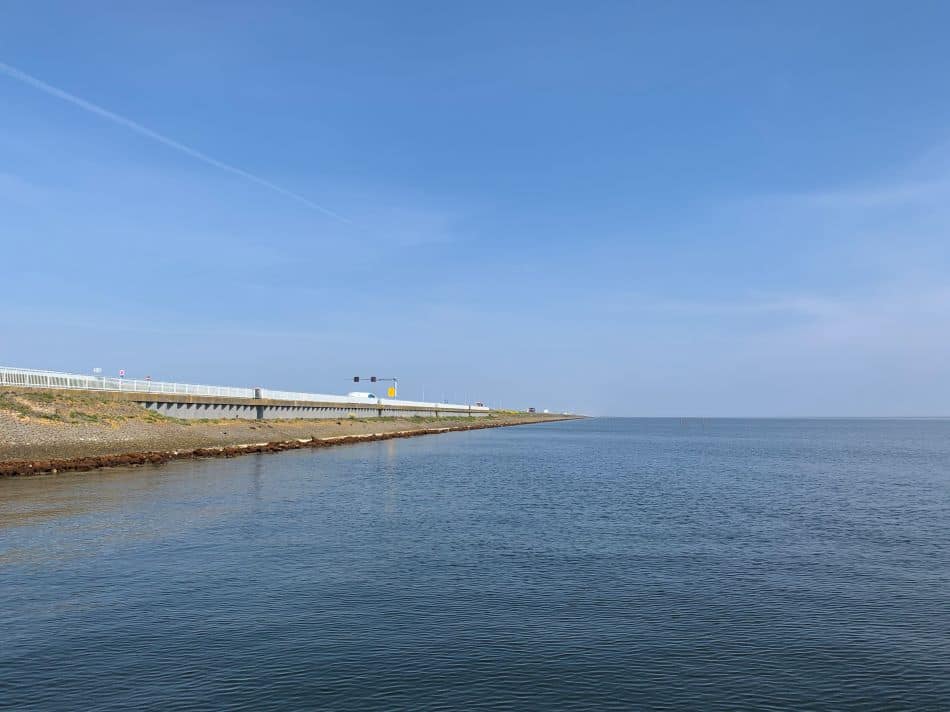
How Much Will Sea Levels Rise?
A benchmark for many people is the situation in 2050 and 2100. A timeframe of just under 30 years or 80 years is still manageable and provides an estimate to what extent we, as the Dutch, should already be concerned about rising sea levels.
The KNMI report (Climate Signal’21) provides the following estimates (see table below). These estimates are based on the so-called SSP (Shared Socioeconomic Pathways) scenarios used in the IPCC report for changes in greenhouse gas emissions into the atmosphere.
- The IPCC SSP1-2.6 scenario is an optimistic scenario in which greenhouse gas emissions decrease rapidly and become negative between 2050-2100. In this case, the IPCC report still assumes a 1,0-1,8 oC increase in global temperature (best estimate = 1,4 oC) around 2100.
- The IPCC SSP2-4.5 scenario is where the annual increase in greenhouse gases is assumed to stabilize and start decreasing from 2050 onwards. In this case, the IPCC report assumes a 2,1-3,5 oC increase in global temperature (best estimate = 2,7 oC) around 2100.
- The IPCC SSP5-8.5 scenario is the pessimistic scenario in which the increase in greenhouse gas emissions continues and is about 3-4 times higher in 2100 than today. In this case, the IPCC report assumes a 3,3-5,7 oC (best estimate = 4,4 oC) increase in global temperature around 2100.
| IPCC Scenario | Sea level rise until 2050 | Sea level rise until 2100 |
|---|---|---|
| SSP1-2.6 | 14-38 cm | 30-81 cm |
| SSP2-4.5 | 15-41 cm | 39-94 cm |
| SSP5-8.5 | 16-47 cm | 54-121 cm |
Thus, in the coming decades, the rise in sea level seems limited to about 1-2 meters, even in the most pessimistic scenario.
However, the rate of sea level rise is also increasing. If we have to cope with 1 meter higher sea levels in 2100, we also have to cope with an annual increase of 1-1,5 cm/year in 2100, considerably higher than the 4 mm/year in 2021. It will take only 50-100 years to expect another meter of rising sea levels.
The Netherlands may still be safe in 2100, but whether it can cope with the sea level rise in 2200 or beyond remains to be seen.
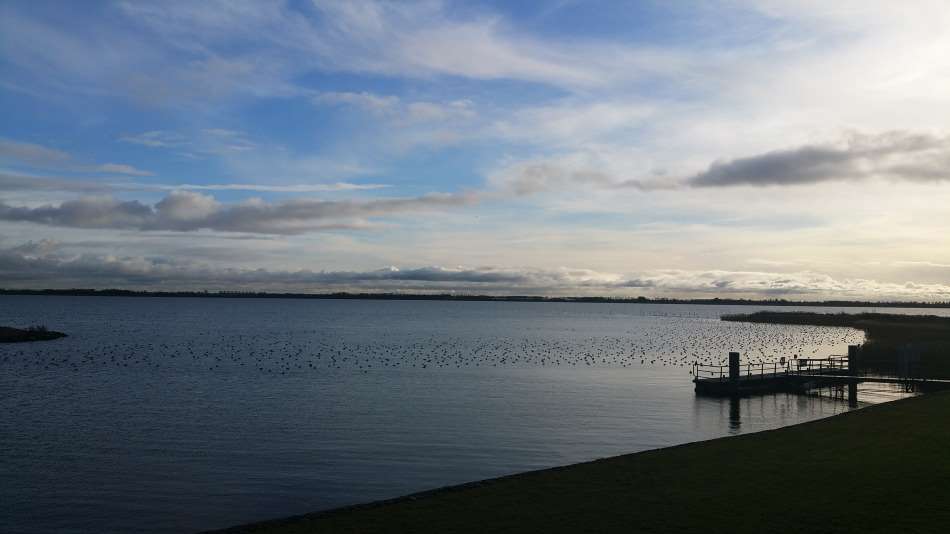
How Much Can Sea Levels Rise?
Unfortunately, the temperature in Antarctica is rising 2-3 times faster than the global average. This is why the Antarctic ice sheet is melting four times faster than it was 20-30 years ago.
The maximum rise in sea level would be ± 63 meters if all the ice on the globe were to melt. Worldwide sea levels would rise by ± 55 meters if all the ice in Antarctica melted. Worldwide sea levels would rise by ± 7 meters if all the ice on Greenland melted.
A 63-meter rise in sea level seems enormous, but the frightening thing is that an increase of 63 meters in sea level is not that much. In fact, on average, the earth’s seas and oceans are ± 3700 meters deep, and a 63-meter rise in sea level is, therefore, an increase of less than 2%. Nevertheless, such a minuscule rise in sea level would have dramatic consequences for The Netherlands.
The IPCC and KNMI reports do not yet assume this worst-case scenario of a sea level rise of 63 meters and still speak of 1-2 meter increases over the next 80 years. However, the sea level will continue to rise after 2100 and may then reach levels that could be devastating for the Netherlands.
The KNMI report cites maximum sea level rises around 2300 of 1.5-7 meters and even 16-17 meters if factors such as the collapse of the ice cliffs at the edge of Antarctica are included (scenario SSPS5-8.5 H++).
The fact that these massive increases in sea level are mentioned in the report shows a high level of concern. If greenhouse gas emissions continue unabated, the likely increases in global temperatures are such that these vast sea level rises could become a reality, and it would be too late to prevent them.
The main concern here is that limiting human emissions of greenhouse gases has not gotten off the ground so far, despite all the pledges. Several countries, such as China and India, are unwilling to limit these greenhouse gas emissions.
If their resistance continues, the Netherlands will have to prepare for a significantly greater rise in sea levels than expected, despite all the efforts made by other countries.
Consequences Of The Sea Level Rise For The Netherlands
The big question, of course, is what rise in sea level can the Netherlands handle without flooding?
Experts think the Netherlands can handle a rising sea level of up to 2 meters. However, rising sea levels of 3-5 meters or more would require draconian measures to prevent flooding in the Netherlands.
Dutch engineers have done a phenomenal job building the Afsluitdijk and the Delta Works, one of the seven modern wonders of the world. However, this defense against water will no longer be enough if the sea level rises more than 2 meters.
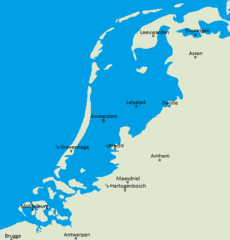
This map shows what the Netherlands could look like if we do not take draconian measures. In particular, the western part of the Netherlands is at risk of flooding.
About 9 million people live in the threatened part of the Netherlands, and cities like Amsterdam and Rotterdam would be flooded.
How Is The Netherlands Dealing With Rising Sea Levels?
The Netherlands follows two parallel approaches to climate change and rising sea levels.
Dutch engineers contemplate the next generation of Delta Works to protect the Netherlands against rising sea levels. In addition, The Netherlands aims to prevent further global warming and a rise in sea level as much as possible by limiting greenhouse gas emissions.
The Netherlands aims to do everything possible to reduce global greenhouse gas emissions, limit global warming, and prevent rising sea levels. Otherwise, the Netherlands could become one of the biggest victims of the climate crisis.

